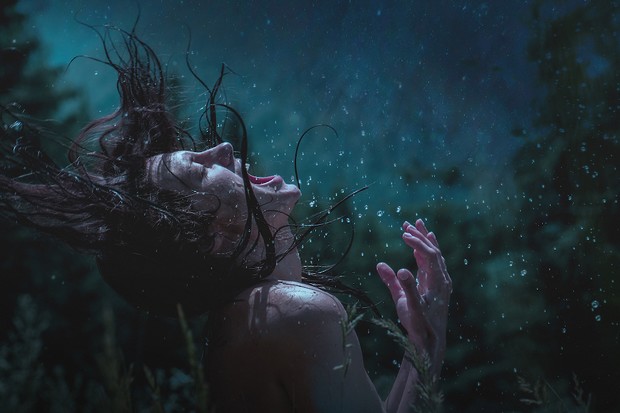Producción / Financiación - Eslovaquia
Informe de industria: Producir - Coproducir...
En pleno auge pospandémico, la producción eslovaca bate récords en 2022
por Martin Kudláč
El 2022 ha sido testigo de un notable impulso de la industria cinematográfica eslovaca, con un total de 50 producciones que suponen un salto sustancial respecto a años anteriores

Este artículo está disponible en inglés.
Despite the residual impact of the pandemic, 2022 bore witness to the triumphant resilience of the Slovak film industry, according to recent reports. The year commenced under the shadow of pandemic-induced restrictions, but as they gradually lifted, the cultural scene in Slovakia underwent a marked revival. Theatres, galleries and concert halls all reopened their doors, initiating a surge of cultural activities that began to regain pre-pandemic footfall.
Significantly, film production and distribution also experienced a revivification, and cinema audiences grew steadily, though with caution initially. The pandemic had reoriented viewers' preferences towards home-based film consumption, but the lure of the big screen remained strong (read the news).
Film production reached a record high in 2022 with the production of 50 Slovak films intended for cinemas. This indicates a substantial increase from the 44 films produced in 2019 and the lower numbers of 28 and 26 in 2020 and 2021 respectively. These figures comprise 28 fiction feature films, 20 documentaries and 2 animations. Of the 28 fiction features, 15 were fully or majority Slovak productions, such as Victim [+lee también:
crítica
tráiler
entrevista: Michal Blaško
ficha de la película], The Ballad of Piargy [+lee también:
crítica
tráiler
ficha de la película] and Nightsiren [+lee también:
crítica
tráiler
entrevista: Tereza Nvotová
ficha de la película], while the minority co-productions included the Czech Oscar candidate Il Boemo [+lee también:
crítica
tráiler
entrevista: Petr Vaclav
ficha de la película], Arvéd and the sci-fi drama Ordinary Failures [+lee también:
crítica
tráiler
entrevista: Cristina Grosan
ficha de la película]. Of the 20 feature-length documentaries, 11 were 100% or majority Slovak productions (Denis Dobrovoda’s The Cathedral [+lee también:
tráiler
ficha de la película] and Mira Erdevicki’s Leaving to Remain [+lee también:
crítica
ficha de la película] among others) and 9 were minority co-productions, such as Igor Ivanko’s Fragile Memory [+lee también:
crítica
tráiler
entrevista: Igor Ivanko
ficha de la película] and Lucie Králová’s critically acclaimed experimental documentary Kapr Code [+lee también:
crítica
tráiler
entrevista: Lucie Králová
ficha de la película]. A majority of the productions were in the standard budget range for European cinema, with the most expensive film being Journey to Yourland [+lee también:
crítica
tráiler
ficha de la película] (€3,854,008) and the cheapest, Sheep (€2,000).
Slovak companies also enjoyed substantial success in securing funding through European programmes such as Eurimages and Creative Europe - MEDIA. Five Slovak projects were supported, and Slovak companies received a record amount of €1,830,472.38 in the MEDIA programme. The industry's newfound dynamism also witnessed the rise of emerging filmmakers, with fourteen full-length films directed by first-time directors. A majority of these films are 100% or majority Slovak productions.
In terms of external funding, Slovak companies had an outstandingly successful year within the Creative Europe Programme, amassing a record €2,595,885.28 in support – the highest amount since Slovakia's induction into the Programme. Of this, €1,830,472.38 were procured from the MEDIA sub-programme. An additional thirteen companies secured a total of €765,412.90 for European Cooperation Projects within the Culture sub-programme.
Further success was marked within Eurimages, the Council of Europe's cinematographic fund and the only European fund supporting transnational co-productions of feature-length films. In 2022, 14 Slovak projects applied for support from Eurimages, of which five were successful. These included Ivan Zachariáš’s The End of the World, which received €276,000 in support, and Ivan Ostrochovský’s third full-length feature film, The Spring (read the news), which secured €260,000. Additionally, the animated project Living Large, directed by Kristína Dufková, gained €393,000, while Arsen Anton Ostojič’s The Crystal Planet received €149,000, and Szabolcs Tolnai’s Cycling with Zoli the Turk garnered €175,000.
¿Te ha gustado este artículo? Suscríbete a nuestra newsletter y recibe más artículos como este directamente en tu email.















